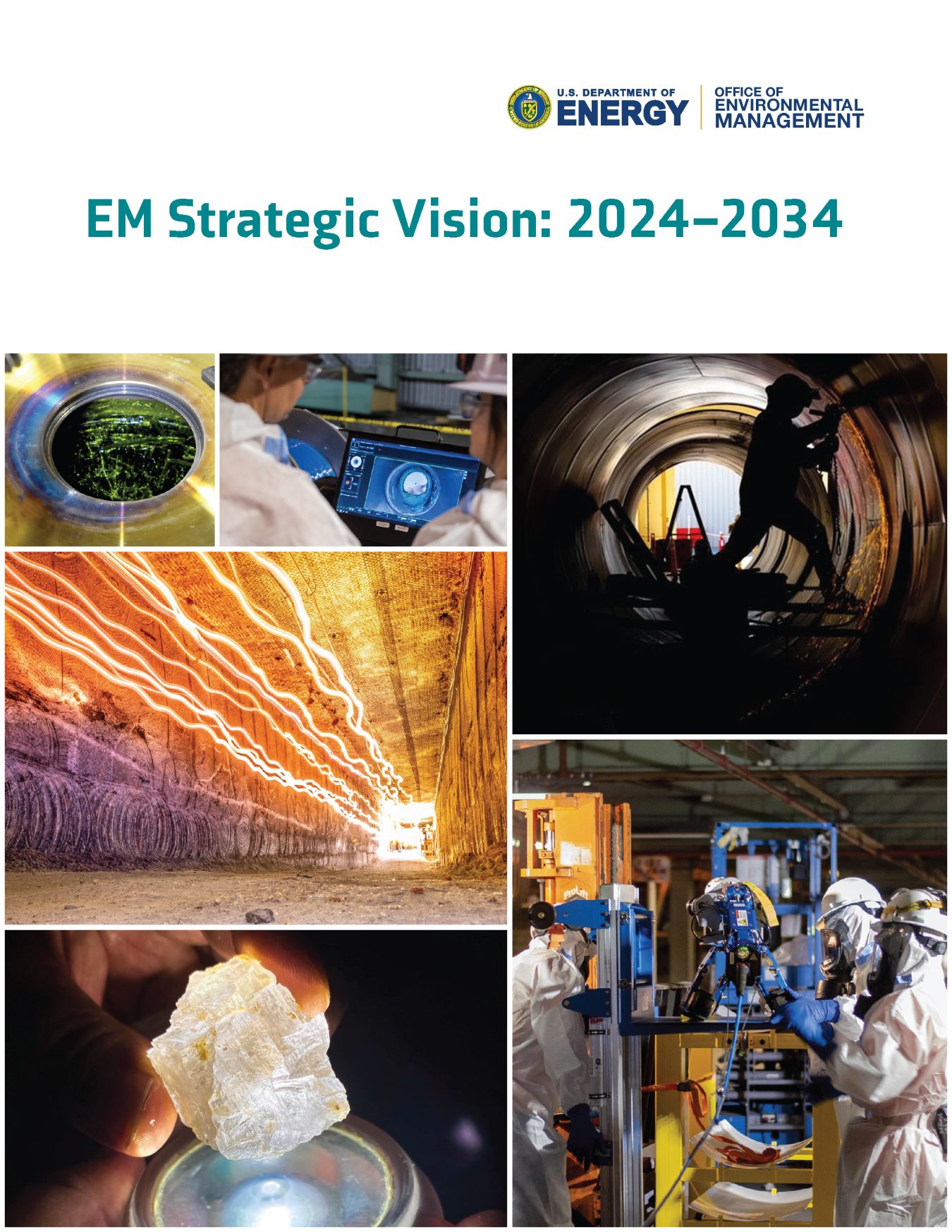EM's Strategic Vision
For more than three decades, the EM program has tackled one of the largest environmental cleanup efforts in the world — addressing decades of nuclear weapons production and government-sponsored nuclear energy research in the United States. The EM Strategic Vision: 2024-2034 identifies planned significant accomplishments.
EM Strategic Vision: 2024-2034

- Energy Technology Engineering Center
- Hanford
- Idaho National Laboratory
- Lawrence Livermore National Laboratory
- Los Alamos National Laboratory
- Moab Uranium Mill Tailings Remedial Action Project
- Nevada National Security Sites
- Oak Ridge
- Paducah
- Portsmouth
- Sandia National Laboratory
- Savannah River Site
- Waste Isolation Pilot Plant
- West Valley Demonstration Project
Major Accomplishments
Explore news articles about significant EM milestone priority accomplishments.

